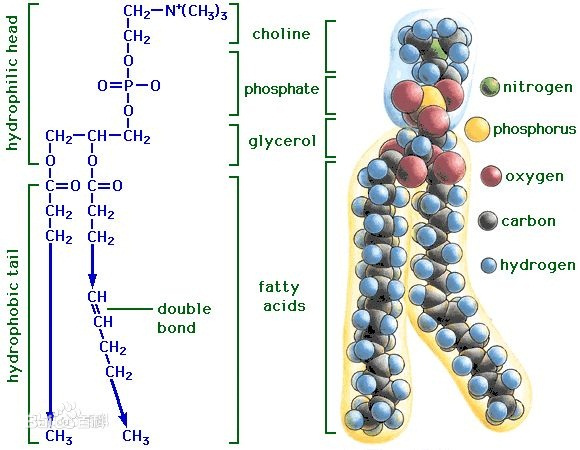Phospholipid bilayer structure
Time:2024-01-18
The phospholipid bilayer is a fundamental structural component of cell membranes, providing a dynamic and selectively permeable barrier that separates the internal and external environments of a cell.The phospholipid bilayer is primarily composed of phospholipid molecules.Each phospholipid molecule consists of a hydrophilic (water-attracting) head and two hydrophobic (water-repelling) tails.
Phospholipids are amphipathic, meaning they have both hydrophilic and hydrophobic regions. The hydrophilic head of the phospholipid molecule contains a phosphate group and a glycerol molecule, making it water-soluble. The hydrophobic tails, usually composed of fatty acid chains, are nonpolar and repel water.
Phospholipids arrange themselves in a double layer, forming a bilayer. In the bilayer, the hydrophilic heads face outward toward the aqueous environment (extracellular fluid or cytoplasm), while the hydrophobic tails are oriented inward, away from water.
The lipid bilayer is flexible and dynamic. Phospholipids within the bilayer can move laterally (side to side) and undergo rotational movements, contributing to the fluidity of the membrane.
The hydrophobic interactions between the fatty acid tails provide stability to the lipid bilayer. Van der Waals forces and hydrophobic interactions between adjacent phospholipid tails help maintain the integrity of the bilayer.
Cholesterol molecules are often interspersed within the phospholipid bilayer. Cholesterol helps regulate membrane fluidity by preventing the fatty acid chains of phospholipids from packing too closely together, particularly at lower temperatures.
Integral membrane proteins are embedded within the lipid bilayer. Peripheral membrane proteins are associated with the membrane surface, often interacting with the hydrophilic regions of phospholipids.
The two leaflets of the phospholipid bilayer may have different compositions, leading to membrane asymmetry. Different types of phospholipids, such as phosphatidylcholine and phosphatidylethanolamine, may be distributed unevenly between the leaflets.
The phospholipid bilayer forms a selectively permeable barrier that regulates the passage of substances into and out of the cell. Small, nonpolar molecules (e.g., oxygen, carbon dioxide) can diffuse through the lipid bilayer, while larger or charged molecules typically require specific transport proteins.
Understanding the structure of the phospholipid bilayer is crucial for grasping the basic architecture of cell membranes and the functions they perform in maintaining cellular integrity and regulating molecular transport.


 CN
CN





